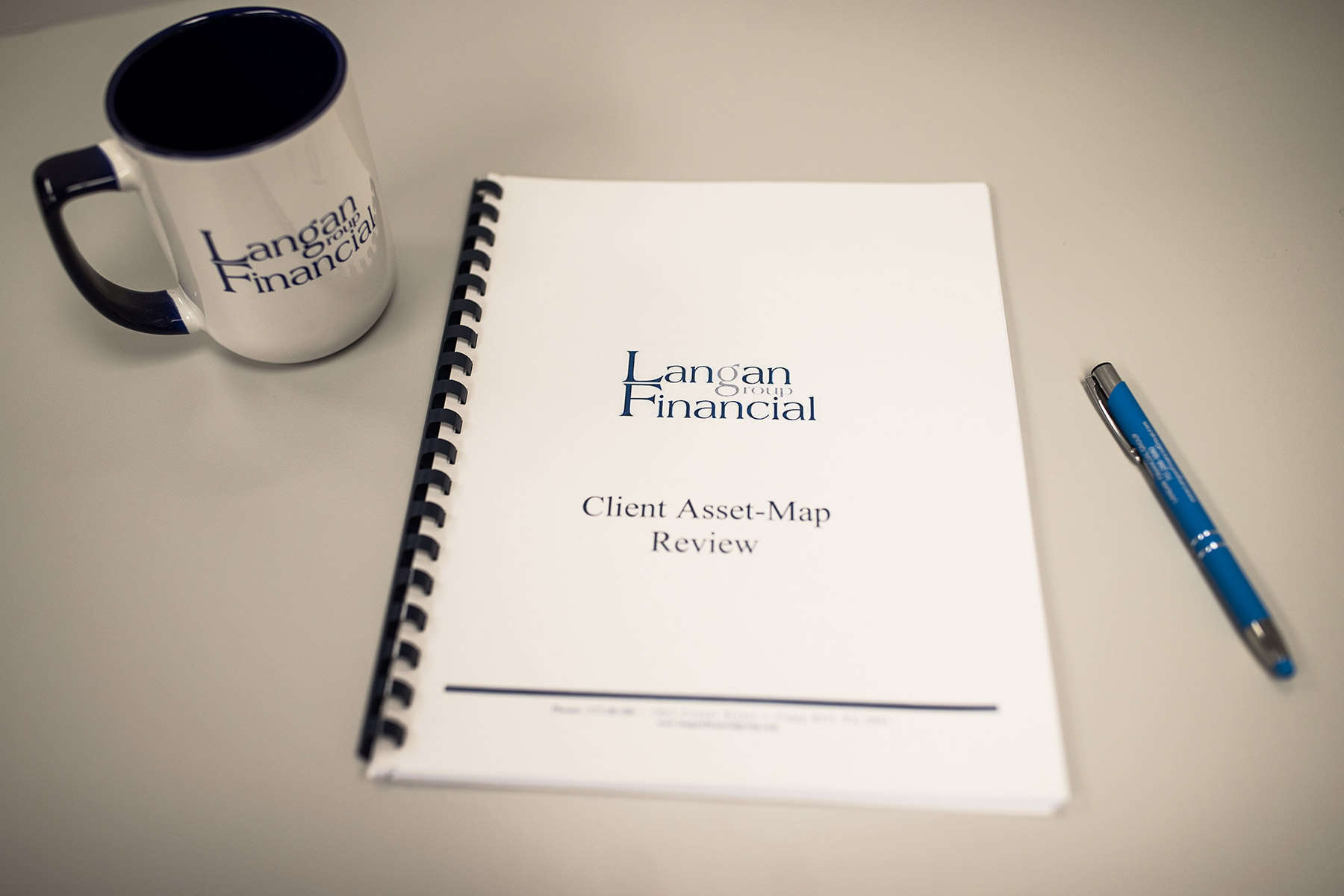
How Do I Find Out What My 401(k) Fees Are?
When participating in a group retirement plan, there are two ways service providers can assess their fees:
- Paid by participant accounts
- Paid by the employer
The first step in determining the fees is to determine who is paying them. Is the company paying the fees on behalf of the employees, or are the employees paying the fees?
What Fees Are Associated with a 401(k)?
The fees included in a 401(k) are broken into the following categories:
- Investment Expense
- Recordkeeping Expense
- Advisory Expense
- Third-Party Administrator Expense
- For larger plans (over 100 eligible employees) there may be the cost of an audit.
Hidden fees may exist in the above categories, but we will delve into that in the next section.
Investment Expense
The investment expense is the cost of being invested in any funds in the plan. Since 401(k) plans are primarily made up of mutual funds, a mutual fund has an expense ratio to cover the cost of fund managers, and any other costs associated with running an investment fund.
The fund’s expense ratio will change depending on whether it is active or passively managed. Active funds typically have a higher expense ratio than passive funds, but the idea is to outperform the market by using active management strategies.
A passive funds goal is to track an index, so once the underlying funds are selected, there is very little rebalancing or maintenance, resulting in a lower fee.

Recordkeeping Expense
The recordkeeping expense is the cost of the platform that hosts the 401(k) plan. This can be charged as a flat fee, as an asset-based fee, or a combination of both.
- Flat Fee: Typically has a base fee and a per-participant fee
- Asset-based fee: Shown in basis points (1 basis point = 0.01%), is a fee charged based on plan assets
- Combination: When both are present, there is likely a reduced flat fee with a small asset-based fee
Recordkeepers determine their pricing based on three main factors:
- Assets in plan
- Participants in plan
- Cash flows in a one-year period
Advisory Expense
The advisory expense is the fee for the financial advisor on the plan to manage the investment options, work with employees in the plan, and provide fiduciary services to the plan.
A financial advisor can act as either a 3(21) or 3(38) fiduciary:
- 3(21) fiduciary acts as a co-fiduciary with the plan sponsor. They will provide investment advice and recommendations, but the plan sponsor maintains ultimate decision-making authority and responsibility. This provides protection to the plan sponsor by:
- Providing expert guidance on investment selection and monitoring investments
- Ensure the plan is following a prudent investment process
- Assisting with documentation of investment decisions
- 3(38) fiduciary takes on full responsibility and liability for selecting, monitoring, and managing the plan’s investment lineup. This provides a higher level of fiduciary protection for the plan sponsor by:
- Transferring investment-related fiduciary liability to the advisor
- Allowing the plan sponsor to delegate investment decisions entirely
- Providing professional oversight of the investment menu
The advisory expense can also be charged as a flat fee, or a percentage of assets (asset-based fee).
Third-Party Administrator Expense
The Third-Party Administrator is the party responsible for creating plan documents, year-end testing, reporting, and the administration of the plan. Pricing is typically made up of a base fee with per participant fees, and then ancillary pricing for additional services.
Additional services include requesting a distribution, a loan, or performing additional testing, to name a few of the services. The additional services are typically charged to the participant making the request, instead of being paid by the plan sponsor.
Audit Cost
A 401(k) plan with over 100 participants is required to go through an audit. The audit can be costly for a plan but is necessary to ensure compliance of the plan.

What are the Hidden Fees in a 401(K)?
Revenue sharing increases the expense ratio for the funds, which in turn can reduce the investor’s returns. There are two main types of revenue sharing:
One of the most common hidden fees in a 401(k) is referred to as revenue sharing. These hidden fees can be found within mutual fund companies.
- 12b-1 Fees
12b-1 fees are meant to compensate the recordkeeper for distrusting and marketing the mutual fund company’s funds.
- Sub-Transfer Agency Fees (Sub-TA Fees)
These compensate the 401(k) recordkeeper for participant-level recordkeeping
The revenue sharing present in each fund will be different depending on the share class. For example, an R-2 share class will have the following expenses:
- 12b-1 fees: 0.75%
- Sub-TA fees: 0.35%
Which adds up to 1.10% before the actual investment expense is even considered.
Revenue sharing can help offset recordkeeping, but it is important to make sure that the revenue sharing is being counted towards the recordkeeping expense.
What Causes Retirement Fees to Change?
The three most important factors are:
- How many assets are in the plan
- How many participants are in the plan
- The annual number of cash flows into (or out of) the plan.
Fees in a retirement plan can change, but not without notification to the participants in the plan.
While the method fees collected can vary by plan and recordkeeper, it will likely follow either a base fee with per participant fee, an asset charge, or a combination of both.
As the plan grows, the recordkeeper can reduce these fees, but it typically helps to have some outside proposals to help drive the pricing down. A financial advisor should benchmark plans at least every three to five years to ensure pricing and services best fit the company.
What is the Average Advisor Fee for 401(k)?
401(K) advisor fees can vary on retirement plans depending on the services provided. While an advisory fee can vary from as low as five basis points for a larger well-established plan, it could also be closer to fifty basis points for a smaller start-up plan.
As far as services go, an advisor should review the investment options in the plan periodically, lead plan reviews with the retirement plan committee, and educate participants on the benefits of their plan and retirement savings. If an advisor does additional services such as providing participant advice, this can increase their advisory fee.
One other factor that can impact the advisory fee of a 401(k) plan is if the advisors are acting in a fiduciary capacity for the plan. While having an advisor on the plan can provide enhanced fiduciary protection, the level of protection depends on the specific role and responsibilities taken on by the advisor. They can act as either a 3(21) or 3(38) fiduciary advisor.
- A 3(21) Fiduciary advisor acts as a co-fiduciary and does not maintain discretion of the investment decisions, rather it remains with the plan sponsor
- A 3(38) Fiduciary takes on full responsibility and liability of selecting, monitoring, and managing the plan’s investments.
A 3(38) advisor could potentially have a higher fee for their discretionary work, due to their increase liability.
It is important to mention that while hiring a fiduciary advisor can provide significant protection, the plan sponsor will still retain some fiduciary responsibility. The act of selecting an advisor itself is a fiduciary duty.
It is important to review the service agreement of the advisor to ensure they are completing all of their stated services, and receiving reasonable compensation for such services.

What Should I Be Paying for My Fees?
Using a tool called Prism Fees, we were able to find a high and low fee for each fee category in a 401(k) plan. The table below details the average range of fees for a plan with the listed parameters. Please keep in mind, that this is assuming standard services in a 401(k) plan, and not including any additional services such as education meetings or 3(16) fiduciary services. The information below is just for educational purposes:
| Under $1,000,000 20 Participants | $1,000,000 – $5,000,000 35 Participants | $5,000,000 – $10,000,000 60 Participants | |
| Investment Expense | 0.32% – 0.59% | 0.31% – 0.48% | 0.29% – 0.44% |
| Recordkeeping | 0.49% – 1.13% | 0.24% – 0.58% | 0.14% – 0.37% |
| TPA/Administration | 0.11% – 0.51% | 0.06% – 0.31% | 0.05% – 0.09% |
| Advisory | 0.43% – 0.80% | 0.33% – 0.51% | 0.24% – 0.39% |
To recap, a retirement plan will be paying the fees listed below. The average prices for each service vary based on the assets and participants in the plan, investments, and services present in the plan:
- Investment Expense
The cost of investing in a fund company’s product. This fee is almost always charged to the participant, rather than the plan. These fees ensure they can maintain the management of the fund. An investment expense will be higher in actively managed funds when compared to their passively managed counterpart.
- Recordkeeping Expense
The recordkeeping expense is used to cover the cost of the setup and website the 401(k) is hosted on. This can also cover some participant distributions and any other platform-related costs.
Recordkeeping expenses may be covered by the employer, or they may be charged to each participant. It is important to review the participant fee disclosure to see who is paying these fees.
- Third-Party Administrator (TPA) Expense
The TPA receives compensation for administering and testing the plan to ensure it remains in compliance. TPA fees can also be paid by either the employer or passed on to the plan participants.
The participant will likely be charged for any ancillary services, such as requesting a loan or distribution, but the other fees may be covered by the employer. It is important to review the participant fee disclosure to see if you are being changed TPA fees.
- Investment Advisor Expense
The investment advisor receives compensation for monitoring the investments, reviewing plan design, providing education, and meeting with participants to ensure they are enrolled. Advisor compensation can range from 5 basis points to 80 basis points, depending on the services provided as well as the size of the plan.
Advisory services also have the option of either being charged to the employer, or to participant accounts, so it is important to review the participant fee disclosure to see who these fees are being charged.
Overall, it is important to know what fees are being paid in a retirement plan, whether you are the employer or an employee of the plan. If you are unsure of how to read the fee disclosure documents or want a second opinion, a financial advisor can be a great resource to discuss this with.
About the Financial Authors

Alexander Langan, J.D, CFBS, serves as the Chief Investment Officer at Langan Financial Group. In this role, he manages investment portfolios, acts as a fiduciary for group retirement plans, and consults with clients regarding their financial goals, risk tolerance, and asset allocation.
With a focus on ERISA Law, Alex graduated cum laude from Widener Commonwealth Law School. He then clerked for the Supreme Court of Pennsylvania and worked in the Legal Office of the Pennsylvania Office of the Budget, where he assisted in directing and advising policy determinations on state and federal tax, administrative law, and contractual issues.
Alex is also passionate about giving back to the community, and has participated in The Foundation of Enhancing Communities’ Emerging Philanthropist Program, volunteers at his church, and serves as a board member of Samara: The Center of Individual & Family Growth. Outside of work and volunteering, Alex enjoys his time with his wife Sarah, and their three children, Rory, Patrick, and Ava.

Harry Claypool currently serves as an Associate 401(k) Advisor at Langan Financial Group where he assists Alex in servicing retirement plans, preparing plan reviews, and handling administrative work.
In his free time, Harry enjoys visiting new restaurants, spending time with friends and family, and watching the Eagles.
About Langan Financial Group: 401(K) Financial Advisors
Langan Financial Group is an award-winning financial planning firm with offices in York, Pennsylvania and Harrisburg, Pa.
With over 100+ 5-star reviews, Langan Financial Group is an independent financial planning firm established in 1985, offering a broad range of financial planning services.
With an open architecture platform, our advisors have access to a diverse range of products, free from any sales quotas.
Our team of 9 financial experts, each with unique specialties, enhances our ability to focus on delivering value to our clients.
Disclosure
The content is developed from sources believed to be providing accurate information. The information in this material is not intended as tax or legal advice.
Please consult legal or tax professionals for specific information regarding your individual situation.
The opinions expressed and material provided are for general information, and should not be considered a solicitation for the purchase or sale of any security.
Securities offered through Cambridge Investment Research, Inc., a Broker/Dealer, Member FINRA/SIPC.
Investment Advisor Representative, Cambridge Investment Research Advisors, Inc. a Registered Investment Advisor. Cambridge and Langan Financial Group, LLC are not affiliated.
Cambridge does not offer tax or legal advice.



